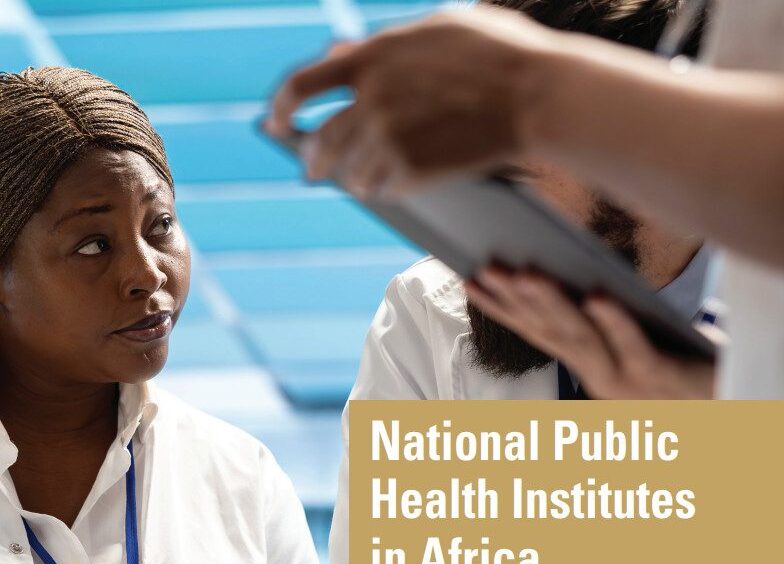Africa’s capacity to anticipate, prevent, and respond to health threats hinges on the strength of its national public health institutes (NPHIs). In launching the Development Plan for NPHIs 2025–2027, the Africa Centres for Disease Control and Prevention (Africa CDC) underscores that “strong national public health institutes are vital for ensuring national health security as well as effective cross-border collaboration and coordination in addressing health threats”. This recognition comes in the wake of a 2022 assessment revealing that only 19 of the 55 African Union member states had fully established NPHIs, with 21 countries in the process of setting them up and 15 yet to initiate this critical step.
The landscape of NPHIs on the continent is marked by uneven progress. Among the 19 established institutes in 2022, just 14 operated under dedicated legal frameworks and only nine had articulated a current strategic plan. By 2023, four additional countries had achieved full NPHI status, raising the total to 23—but glaring gaps in policy consistency, political commitment, infrastructure, and technical capacity continue to impede Africa’s collective ability to prevent and manage public health emergencies effectively. These deficiencies have been laid bare by recent infectious disease outbreaks and highlight the urgency of a coordinated, continent-wide effort to build resilient public health systems.
Against this backdrop of need and opportunity, the Africa CDC has embedded NPHI strengthening as a core pillar of its New Public Health Order and the Strategic Plan 2023–2027. The 2025–2027 Development Plan aims not merely to proliferate NPHIs across all member states, but to ensure that each institute is endowed with the legal authority, operational resources, and skilled workforce necessary to steer national and regional health security agendas. As the plan states, the overarching goal is “to ensure that NPHIs are not only present in every Member State but are also empowered with the necessary legal frameworks, resources and expertise to effectively lead Africa’s health security efforts”.
The first strategic objective of the plan commits Africa CDC to support the establishment of NPHIs in all member states through targeted technical assistance, legal guidance, and set-up support. By deploying expert teams to guide legislation, organizational design, and operational planning, Africa CDC seeks to accelerate the creation of institutions capable of centralizing surveillance, laboratory services, emergency preparedness, and public health research. This foundation will help countries move beyond fragmented structures toward unified, science-driven entities that can coordinate entire national health systems during both routine and crisis periods.
Once established, NPHIs must operate at consistently high standards. To this end, the plan’s second strategic objective focuses on bolstering operational and programmatic functionality through the standardization of practices, capacity building, and rigorous performance evaluations. Africa CDC will work with institutes to adopt best-practice guidelines, strengthen internal quality assurance processes, and develop outcome-oriented monitoring frameworks. Such harmonization not only ensures that each NPHI meets a common benchmark of excellence, but also facilitates cross-border data sharing and joint investigations when health threats transcend national boundaries.
Regional collaboration is at the heart of the plan’s third strategic objective, which designates and empowers NPHI Centres of Excellence (CoEs). These CoEs will serve as hubs for advanced public health initiatives, offering specialized training, peer-to-peer mentorship, and access to strategic resources. By fostering networks of expertise, the plan aspires to accelerate innovation in priority areas such as epidemic intelligence, genomics, and vaccine development, while creating platforms for rapid mutual assistance among neighboring countries during outbreaks or emergencies.
The fourth and final strategic objective calls for the strengthening of governance, partnerships, and collaboration mechanisms to sustain NPHI development. This entails forging formal collaboration frameworks among NPHIs, ministries of health, regional economic communities, and international partners. Africa CDC will facilitate joint initiatives, multi-sector stakeholder engagement, and resource mobilization efforts that secure long-term funding and political backing. By embedding NPHIs within robust governance ecosystems, the plan seeks to safeguard their autonomy and accountability—key ingredients for enduring public trust and institutional resilience.
Underpinning all four strategic objectives is a commitment to continuous learning and adaptation. Africa CDC has pledged to develop a detailed implementation roadmap, complete with timelines, deliverables, and key performance indicators. Regular progress reviews and mid-term assessments will enable the timely recalibration of strategies, ensuring that interventions remain aligned with evolving national contexts and emergent health challenges.
The Development Plan 2025–2027 represents a watershed in Africa’s journey toward a self-reliant public health architecture. By systematically addressing the legal, technical, and collaborative dimensions of NPHI establishment and maturation, Africa CDC aims to close critical gaps that have long hampered the continent’s collective capacity to safeguard its people. As the plan unfolds, it will serve as both a strategic compass and a performance yardstick, guiding member states toward the shared vision of a resilient, integrated network of NPHIs capable of detecting, preventing, and responding to health threats at home and beyond.
Looking ahead, the success of this initiative will depend on sustained political will, strategic investments, and the active engagement of diverse stakeholders; from frontline health workers and laboratory scientists to policy-makers and civil society. Should these elements coalesce around the Africa CDC’s development plan, the coming years could witness the transformation of Africa’s public health landscape, delivering safer, more secure health environments for millions across the continent.
Source: National Public Health Institutes in Africa: Development Plan 2025 – 2027 – Africa CDC



